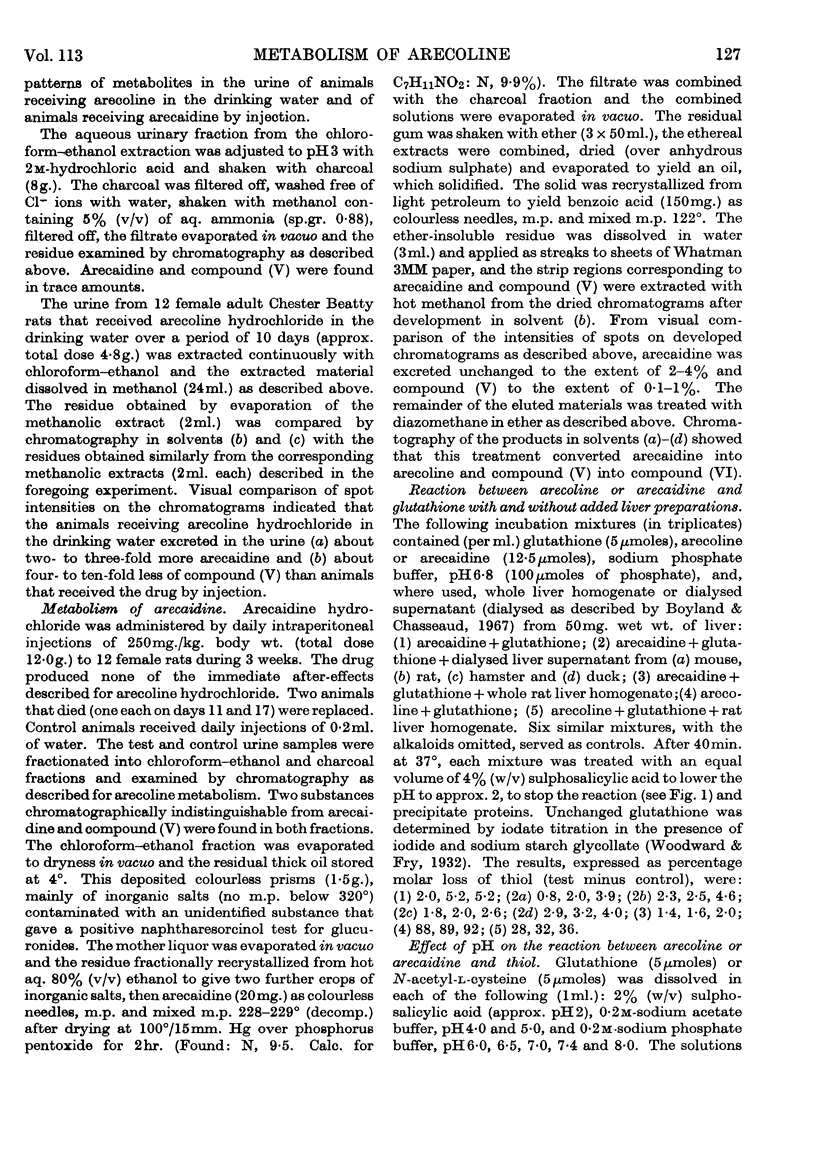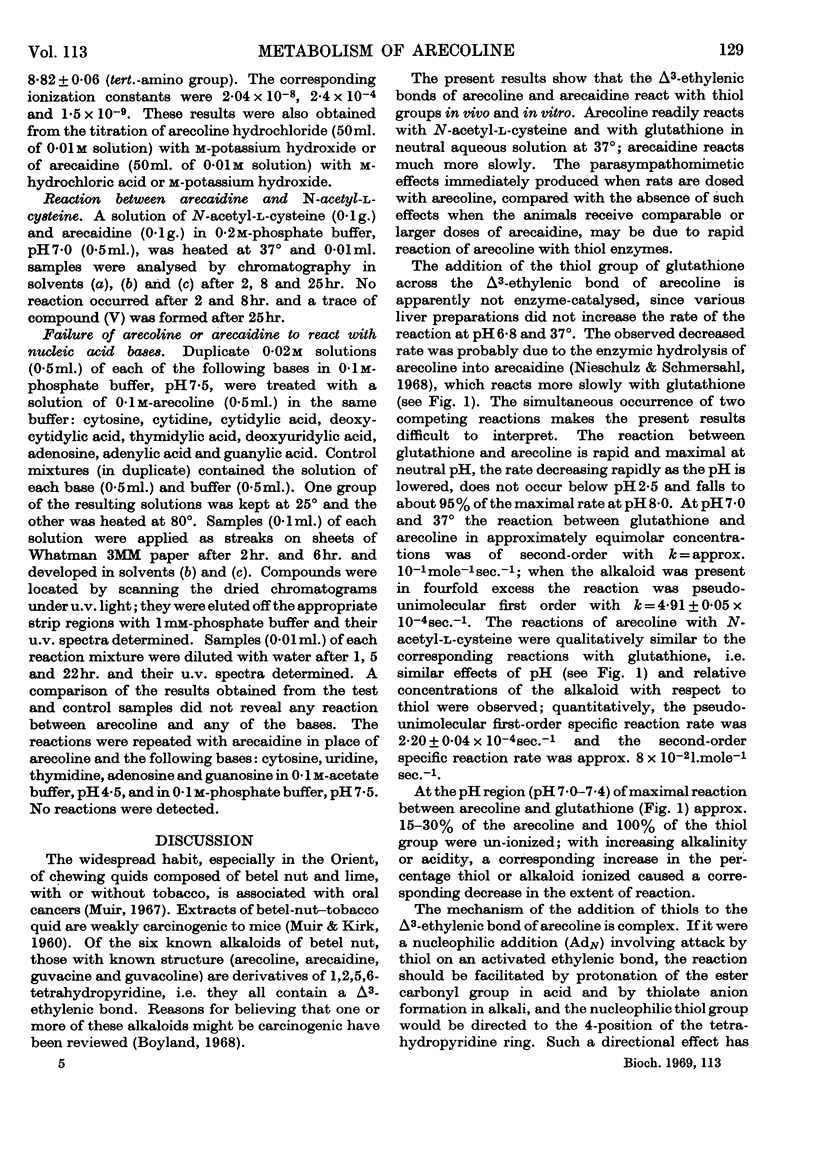Abstract
1. In the rat, arecoline is converted into arecaidine and both compounds are converted into N-acetyl-S-(3-carboxy-1-methylpiperid-4-yl) -l-cysteine. 2. The structure of the metabolite was established by (a) synthesis, (b) conversion into N-acetyl-S-(3-methoxycarbonyl-1-methylpiperid-4-yl) -l-cysteine methyl ester, which was chromatographically identical with the synthetic material, and (c) n.m.r.-and i.r.-spectral analysis of the 3-methoxycarbonyl derivative. 3. In ethanolic solution, or in phosphate buffer at pH7·0, arecoline reacted with N-acetyl-l-cysteine to give N-acetyl-S-(3-methoxycarbonyl-1-methylpiperid-4-yl) -l-cysteine; under similar conditions, arecaidine reacted more slowly to give N-acetyl-S-(3-carboxy-1-methylpiperid-4-yl) -l-cysteine. 4. The reaction between arecoline and glutathione or N-acetyl-l-cysteine occurred maximally at neutral pH and decreased rapidly with increasing acidity. At neutral pH, the reactions were bimolecular and second-order when the reactants were in approximately equimolar concentrations and pseudo-unimolecular first-order when arecoline was in large excess. 5. Consideration of the pKa values and degrees of ionization of the reactants and the effect of pH on the stoicheiometry of reaction between arecoline and glutathione or N-acetyl-l-cysteine indicated that reaction between un-ionized species occurred more readily than nucleophilic addition (AdN) reactions involving charged intermediates.
Full text
PDF







Selected References
These references are in PubMed. This may not be the complete list of references from this article.
- BARTLEY W. Metabolism of thiamine phosphates in washed suspensions of kidney particles. Biochem J. 1954 Mar;56(3):379–387. doi: 10.1042/bj0560379. [DOI] [PMC free article] [PubMed] [Google Scholar]
- Boyland E., Chasseaud L. F. Enzyme-catalysed conjugations of glutathione with unsaturated compounds. Biochem J. 1967 Jul;104(1):95–102. doi: 10.1042/bj1040095. [DOI] [PMC free article] [PubMed] [Google Scholar]
- KNIGHT R. H., YOUNG L. Biochemical studies of toxic agents. 11. The occurrence of premercapturic acids. Biochem J. 1958 Sep;70(1):111–119. doi: 10.1042/bj0700111. [DOI] [PMC free article] [PubMed] [Google Scholar]
- MUIR C. S., KIRK R. Betel, tobacco, and cancer of the mouth. Br J Cancer. 1960 Dec;14:597–608. doi: 10.1038/bjc.1960.65. [DOI] [PMC free article] [PubMed] [Google Scholar]
- Miller E. C., Miller J. A. Mechanisms of chemical carcinogenesis: nature of proximate carcinogens and interactions with macromolecules. Pharmacol Rev. 1966 Mar;18(1):805–838. [PubMed] [Google Scholar]
- Nieschulz O., Schmersahl P. Zur Pharmakologie der Wirkstoffe des Betels. 2. Umnoandlung des Arecolin in Arecaidin. Arzneimittelforschung. 1968 Feb;18(2):222–225. [PubMed] [Google Scholar]


